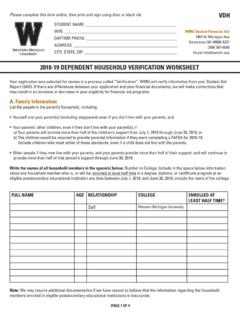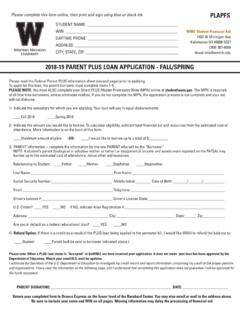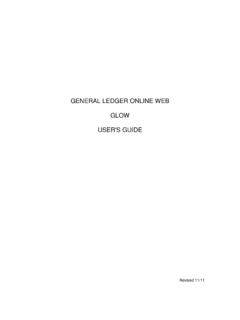Transcription of CIPP EVALUATION MODEL CHECKLIST
1 EVALUATION Checklists Project CIPP EVALUATION MODEL CHECKLIST [Second Edition] A tool for applying the CIPP MODEL to assess long-term enterprises Intended for use by evaluators and EVALUATION clients/stakeholders Daniel L. Stufflebeam March 17, 2007 The CIPP EVALUATION MODEL is a comprehensive framework for guiding evaluations of programs, projects, personnel, products, institutions, and systems. This CHECKLIST , patterned after the CIPP MODEL , is focused on program evaluations, particularly those aimed at effecting long-term, sustainable improvements. The CHECKLIST especially reflects the eight-year EVALUATION (1994-2002), conducted by the Western Michigan University EVALUATION Center, of Consuelo Foundation s values-based, self-help housing and community development program named Ke Aka Ho ona for low income families in Hawaii (Stufflebeam, Gullickson, & Wingate, 2002).
2 Also, it is generally consistent with a wide range of program evaluations conducted by The EVALUATION Center in such areas as science and mathematics education, rural education, educational research and development, achievement testing, state systems of educational accountability, school improvement, professional development schools, transition to work, training and personnel development, welfare reform, nonprofit organization services, community development, community-based youth programs, community foundations, personnel EVALUATION systems, and technology. Corresponding to the letters in the acronym CIPP, this MODEL s core parts are context, input, process, and product EVALUATION . In general, these four parts of an EVALUATION respectively ask, What needs to be done? How should it be done? Is it being done?
3 Did it succeed? In this CHECKLIST , the Did it succeed? or product EVALUATION part is divided into impact, effectiveness, sustainability, and transportability evaluations. Respectively, these four product EVALUATION subparts ask, Were the right beneficiaries reached? Were their needs met? Were the gains for the beneficiaries sustained? Did the processes that produced the gains prove transportable and adaptable for effective use in other settings? This CHECKLIST is designed to help evaluators evaluate programs with relatively long-term goals. The CHECKLIST s first main function is to help evaluators generate timely EVALUATION reports that assist groups to plan, carry out, institutionalize, and/or disseminate effective services to targeted beneficiaries. The CHECKLIST s other main function is to help evaluators review and assess a program s history and issue a summative EVALUATION report on its merit, worth, probity, and significance, and the lessons learned.
4 CIPP EVALUATION MODEL CHECKLIST 2 This CHECKLIST has 10 components. The first contractual agreements to guide the EVALUATION is followed by the context, input, process, impact, effectiveness, sustainability, and transportability EVALUATION components. The last 2 are metaevaluation and the final synthesis report. Contracting for the EVALUATION is done at the EVALUATION s outset, then updated as needed. The 7 CIPP components may be employed selectively and in different sequences and often simultaneously, depending on the needs of particular evaluations. Especially, evaluators should take into account any sound EVALUATION information the clients/stakeholders already have or can get from other sources. CIPP evaluations should complement rather than supplant other defensible evaluations of an entity.
5 Metaevaluation ( EVALUATION of an EVALUATION ) is to be done throughout the EVALUATION process; evaluators also should encourage and cooperate with independent assessments of their work. At the end of the EVALUATION , evaluators are advised to give their attestation of the extent to which applicable professional standards were met. This CHECKLIST s final component provides concrete advice for compiling the final summative EVALUATION report, especially by drawing together the formative EVALUATION reports that were issued throughout the EVALUATION . The concept of EVALUATION underlying the CIPP MODEL and this CHECKLIST is that evaluations should assess and report an entity s merit ( , its quality), worth (in meeting needs of targeted beneficiaries), probity (its integrity, honesty, and freedom from graft, fraud, and abuse), and significance (its importance beyond the entity s setting or time frame), and should also present lessons learned.
6 Moreover, CIPP evaluations and applications of this CHECKLIST should meet the EVALUATION field s standards, including especially the Joint Committee (1994) Program EVALUATION Standards of utility, feasibility, propriety, and accuracy; the Government Accountability Office (2007) Government Auditing Standards; and the American EVALUATION Association (2004) Guiding Principles for Evaluators. The MODEL s main theme is that EVALUATION s most important purpose is not to prove, but to improve. Timely communication of relevant EVALUATION findings to the client and right-to-know audiences is another key theme of this CHECKLIST . As needed, findings from the different EVALUATION components should be drawn together and reported periodically, typically once or twice a year. The general process, for each reporting occasion, calls for draft reports to be sent to intended primary users about 10 days prior to a feedback At the workshop the evaluators should use visual aids, , a PowerPoint presentation, to brief the client, staff, and other members of the audience.
7 (It is often functional to provide the clients with a copy of the visual aids, so subsequently they can brief members of their boards or other stakeholder groups on the most recent EVALUATION findings.) Those present at the feedback workshop should be invited to raise questions, discuss the findings, and apply them as they choose. At the workshop s end, the evaluators should summarize the EVALUATION s planned next steps and future reports; arrange for needed assistance from the client group, especially in data collection; and ask whether any changes in the data collection and reporting plans and schedule would make future EVALUATION services more credible and useful. Following the feedback workshop, the evaluators should finalize the EVALUATION reports, revise the EVALUATION plan and schedule as appropriate, and transmit to the client and other designated recipients the finalized reports and any revised EVALUATION plans and schedule.
8 Beyond guiding the evaluator s work, the CHECKLIST gives advice for EVALUATION clients. For each of the 10 EVALUATION components, the CHECKLIST provides checkpoints on the left for evaluators and checkpoints on the right for EVALUATION clients. The CIPP MODEL s background is summarized in the appendix. For more information about the CIPP MODEL , please consult the references and related checklists listed at the end of this CHECKLIST . CIPP EVALUATION MODEL CHECKLIST 3 1. CONTRACTUAL AGREEMENTS CIPP evaluations should be grounded in explicit advance agreements with the client, and these should be updated as needed throughout the EVALUATION . (See Daniel Stufflebeam s EVALUATION Contracts CHECKLIST at ) Evaluator Activities Client/Stakeholder Activities Contracting Develop a clear understanding of the EVALUATION job to be done.
9 Clarify with the evaluator what is to be evaluated, for what purpose, according to what criteria, and for what audiences. Secure agreements needed to assure that the right information can be obtained. Clarify with the evaluator what information is essential to the EVALUATION and how the client group will facilitate its collection. Clarify for the client, in general, what quantitative and qualitative analyses will be needed to make a full assessment of the program. Reach agreements with the evaluator on what analyses will be most important in addressing the client group s questions. Clarify the nature, general contents, and approximate required timing of the final summative EVALUATION report. Assure that the planned final report will meet the needs of the EVALUATION s different audiences. Clarify the nature, general contents, and timing of interim, formative EVALUATION reports and reporting sessions.
10 Assure that the EVALUATION s reporting plan and schedule are functionally responsive to the needs of the program. Reach agreements to protect the integrity of the reporting process. Assure that the reporting process will be legally, politically, and ethically viable. Clarify the needed channels for communication and assistance from the client and other stakeholders. Assure that the EVALUATION plan is consistent with the organization s protocol. Secure agreements on the EVALUATION s time line and who will carry out the EVALUATION responsibilities. Clarify for all concerned parties the EVALUATION roles and responsibilities of the client group. Secure agreements on the EVALUATION budget and payment amounts and dates. Assure that budgetary agreements are clear and functionally appropriate for the EVALUATION s success.















